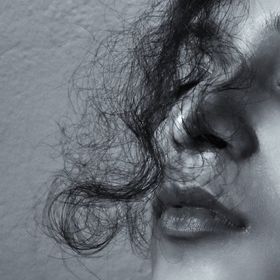Views
334
Awards
Treasure Award
Categories
Same photographer See allBehind The Lens
Discover more photos See all
Behind The Lens
Location
The place was the dried river bed in the Bardhaman district of West Bengal, India. The river Damodar has different looks in different seasons, each one is fascinating. I took this photo during the winter, when most of the river bed was dry, Though there is a small ferry, you can cross the large river simply by walking, just like the woman in the photo. In the monsoons, the river is flooded - again a breathtaking view. It is one of my favourite spots for photography and I still visit the place at different seasons.Time
It was a wintry afternoon when I reached the place. I walked along the channels of water and the sand dunes, took some photos here and there but I was actually looking for a good composition, when I came to this spot. I was immediately drawn by the beautiful curves of the water channel and the shadow play along the sand dunes, and took a few shots. The I saw this lady coming that way to cross the channel. I knew I had the composition !Lighting
I had my tripod with me and had already set it up for the frame; I just waited for the lady to enter the frame and clicked away happily. The light was dying fast - it was half past four in the afternoon which gave the nice reddish tinge across the clear blue sky, but at the same time, forced me to increase the iso to about 400. I wanted a silhouette of the lady, so closed the aperture to about 25. This also helped me to get get a starry effect on the sun which is not present in this frame however.Equipment
I was practically a beginner in digital photography and used a Nikon D5200 when iI took this photo. I only had the standard 18-55mm kit lens and a cheap tripod, so my options regarding background bokeh etc was quite limited. Still, I am quite satisfied with the result, and even today it just reminds me the fact that it is really good planning rather than a pricey camera that gets you the picture. I didn't have a CPL at that time - boy I wish I had it so I could have captured the blue sky. Later, I did go there later with my full frame camera with CPL and ND filter set and tripod to capture 'The Moment' in a much better way - but you know the rule of photography - it just happens once !Inspiration
I always see other people's photos. I have seen great minimalistic photos of a single man/woman on sand dunes, I saw amazing silhouettes, I saw nice photos of river curves taken by the great masters of photography, and I did try to copy their style to take similar photos. But I soon found out that I was just copying the photos, and since people have already seen the better work, they are not interested in mine. Also, I cannot exactly copy the same landscape or the moment, so my photos will be always different. So why not take a different photo ?Editing
Post processing was born with photography. Why did people use dodging /burning in the days of film photography ? Sure, photojournalists should not process their photos as much as the landscape or portrait photographers. For me, Photography is an art, just like painting is. A painter enjoys the freedom to put a bird in a painting if he thinks it is appropriate for the composition, but a photographer cannot, unless he/she wants to exhibit the photo as aa art. Look at the photos submitted in different salons - so many of the award winning photos have models lit by two, three or four lights in a darkened studio, and appearing in the photo with clouds behind her ! Sometimes you can, and sometimes you can not process. For photojournalism, you have to capture the moment in history, so you cannot alter the photo by post processing. However, landscape photography usually requires post processing, to get the effect exactly as it was during the shoot. The camera records the information about light and colour in the raw photo which need to be decoded by the human. I use photoshop for all my post processing along with a few plug ins. The once free nick plug ins are probably the best of all there are, and I usually use it for my landscape photography.In my camera bag
These days, I use a Nikon D 610 full frame DSLR which I always carry in my backpack wherever and whenever I go (except my office of course!). I use the standard Nikon 24-120mm lens for general use, but for landscape photography I use a Tokina 16-28mm. I do have a Nikon 70-300mm in my backpack, but I use it rarely - I am not much of a bird or wildlife photographer. I also use and have a set of ND filters and a CPL - the CPL is a great tool. I always keep an extra memory card and a battery these have saved my life several times ! Oh, the cleaning kit - it simply has to be in the bag. The tripod is not always necessary so other than for landscaping trips, I don't carry it.Feedback
I am still a student of photography, always learning from the others - I am unashamed to admit that. It is always enlightening when you see other people's work even though it might be a bad photograph; at least you learn what not to do ! I don't see any harm in copying other - better photographers' work - but then we must not stop there. I used the tricks I learned from the work of the masters in a different situation and in a different composition - that's what we should do - we should try to be different.













































